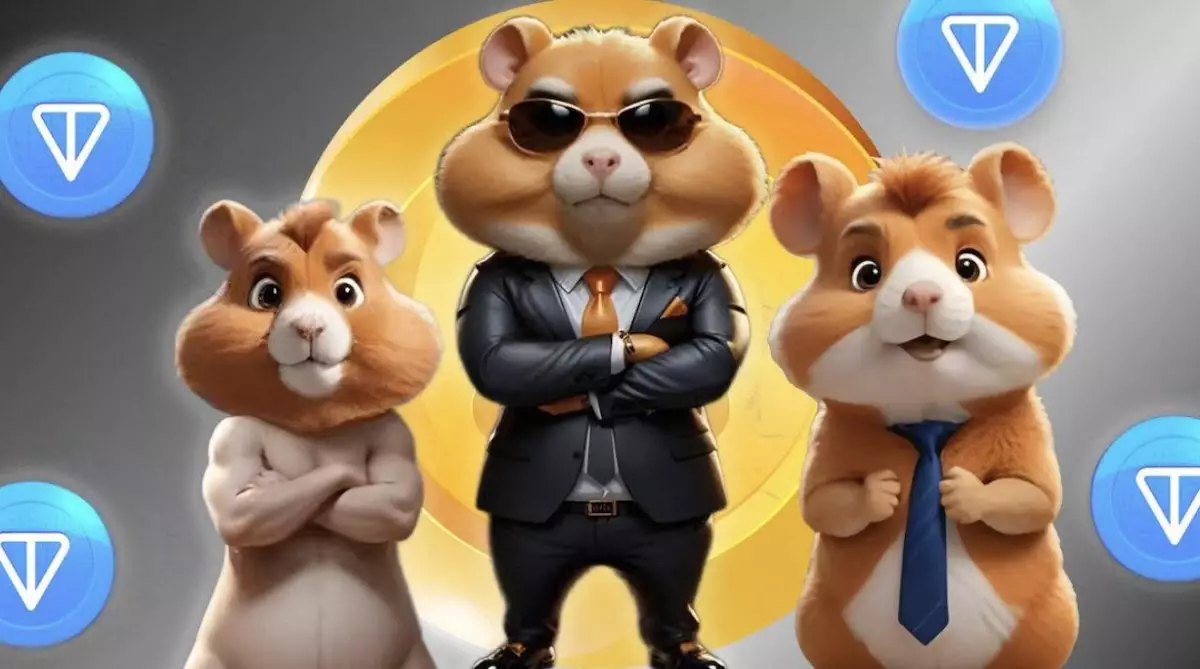Hamster Kombat, a clicker game making waves within the realms of Telegram and blockchain gaming, has recently unveiled an impressive roadmap that extends its vision into 2025. With aspirations to incorporate NFTs as integral in-game assets, establish a Web3 gaming platform, and cultivate a distinctive token economy, the development team seeks not only to transform the game but to leave a lasting impact on the broader blockchain gaming landscape. This article explores how Hamster Kombat is poised to innovate gaming through these ambitious plans.
At the core of Hamster Kombat’s future roadmap lies the introduction of NFTs, which is set to revolutionize player interactions within the game. This shift enables players to take ownership of their in-game assets, paving the way for trading and monetization opportunities. The implications of owning NFTs extend beyond personal satisfaction; they create new economic dynamics that empower players to earn from their gameplay. The team is also developing an advertising network designed to bolster revenue, thereby further supporting the sustainability of the project.
Moreover, the integration of a clan championship is on the horizon, potentially elevating competitiveness within the game. This could attract not only traditional gamers but also a new audience of collectors interested in digital assets, fueling a vibrant community. With an expanding player base, the in-game economy stands to evolve, fostering a richer experience that aligns with user motivations.
What distinguishes Hamster Kombat from other idle clicker games is the team’s aspiration to craft a comprehensive Web3 gaming platform. They envision a fusion of the user-friendly aspects of Web2 with the decentralized, transparent characteristics intrinsic to Web3. This ambition transcends mere gameplay; it seeks to establish a digital environment that fosters community interaction and collaboration.
Capitalizing on a token economy is a pivotal strategy in Hamster Kombat’s plans. The development team is leveraging revenue generated from their advertising network to execute a buyback and burn strategy for its in-game token, HMSTR. By systematically reducing the total token supply—capped at 100 billion—Hamster Kombat aims to create scarcity, potentially driving up the token’s value over time. However, market reactions have been mixed, raising important questions about sustainability in token valuation and player engagement.
The recent airdrop of HMSTR tokens demonstrated both anticipation and disappointment among the player base. Out of 300 million players who engaged with Hamster Kombat since March, a mere 131 million were eligible for the token distribution, with over 2.3 million players disqualified due to suspected cheating mechanisms. The result was a lackluster reward allocation that left many players dissatisfied, impacting community sentiment.
Investors are now wary, as reflected in a significant price drop following the airdrop. Reports indicate that the value of HMSTR plummeted by as much as 41% on the launch day, raising concerns over the market’s stability and the health of the token economy. Moreover, a large percentage—nearly 18%—of circulating HMSTR is concentrated in a single Binance hot wallet, signaling potential vulnerability in token distribution and accessibility.
Despite these early setbacks, Hamster Kombat is poised for future developments, including a second season designed to rekindle interest and stabilize token pricing. The roadmap suggests plans to broaden the game’s ecosystem, not merely relying on a singular release. This dynamic approach aligns with trends in blockchain gaming, where diversification and community-based experiences are paramount.
The anticipated NFT marketplace stands as a critical milestone within this broader vision. It holds the potential to facilitate player-driven economic engagement, allowing users to interact with and derive value from their digital assets. This forward-thinking approach resonates with Web3’s fundamental objective: empowering players through decentralized technologies and transparent processes.
As one of the pioneering titles on the Telegram platform, all eyes are set on Hamster Kombat to gauge its role in shaping the Web3 gaming landscape. With its ambitious roadmap and determination to balance engaging gameplay with tokenomics, the success of Hamster Kombat could redefine standards within the industry. Whether the implementation of NFTs, the strategic use of token buybacks, and community engagement will yield the desired results remains to be seen. However, it is evident that Hamster Kombat is making strides to become a significant player in the ever-evolving realm of blockchain gaming. The enthusiasm surrounding these developments will likely shape the future trajectory of both the game and the genre it represents.


Leave a Reply